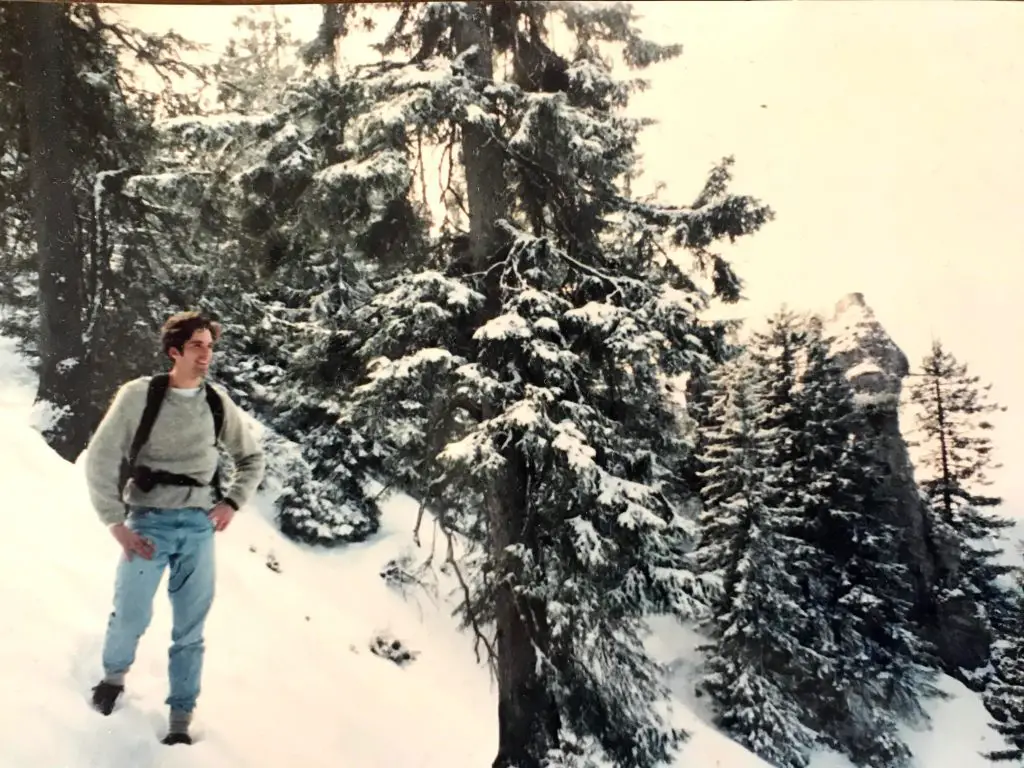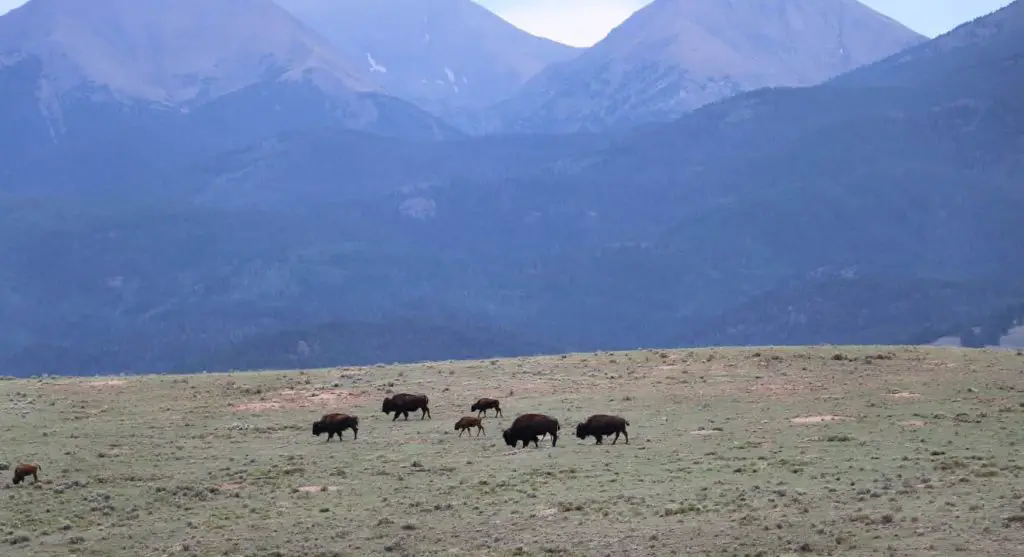Hiking alone is an exhilarating experience where you settle into a relationship with your natural surroundings. If you are like me, you spend a great portion of your waking hours interacting with other people at home, at work, or even in traffic. Spending a weekend hiking a trail alone strips all of that away and lays bare the real you. Be prepared to be changed for the better.
To stay safe while hiking alone, it is critical that you properly prepare for your trip, whether it is one day or more. Plan your route carefully. Let other people know where you are going and when you plan to return. Stick to your planned hiking route.
If you are planning to go on a hike alone then read where I share ten essential tips that you need to consider.

1. Prepare for Your Solo Hike.
Preparation is vital for any hike, but it becomes your top priority when you plan to do the hike alone. You should think of hiking alone just as you would a weekend trip to a foreign country. That is the level of attention to detail that you need to stay safe.
Just as you would double-check that you have your passport, you must double-check your plans for a solo hike. Nobody plans to fail, but people do fail to plan. Go on a solo overnight hike on a whim and be prepared to suffer. Failure to understand your route or bring along some essential kit will put you in a difficult situation exacerbated by being alone.
A useful way to think about this is in terms of the aspects of the hike that you can assess.
- Personal Health and Fitness: Are you in good enough shape to go on a hike?
- Hiking Route and Difficulty: Is this a hike you believe you can handle given the current state of your physical condition?
- Weather: Is the weather forecast favorable? What will you do if the weather turns bad?
- Equipment: Do you have the proper equipment to attempt this hike?
If the answer to any of these questions is ‘NO,’ you need to reconsider your plan to go on this hike alone. It would be best if you either changed your plans or invited a more experienced hiker along for your trip.
2. Plan Your Hiking Route Carefully.
Here the adage of ‘No one plans to fail, but folks do fail to plan’ is true. You don’t have to think of everything for your solo hiking route, but there are some recommended areas to address before you commit to hiking alone.
- Get a map of your route. If you cannot find a good map for your solo hike, then make one. The satellite overlay on Google Maps may provide you with enough detail to navigate and stay on course.
- Measure your solo hike segments’ distances and mark them on your map with notations of a timeline for completing them. Check out my post for calculating how many miles you can hike per hour.
- Calculate how much water and food you might need. For shorter hikes, I often don’t bring food. Water is nearly essential on any hike, no matter how short it is.

3. Tell Others Where You Plan to Hike.
Would you fly to Mexico for the weekend without telling anyone? It is the same for your solo hike – you need to tell at least one person the essentials of your solo hike.
You need to share the following information with a responsible individual that you trust:
- Where you are going, including the route you plan to follow.
- When you are going, including your begin date and end date.
One time, on a whim, I decided to hike from Schloss Neuschwanstein in Bavaria to a nearby ski resort to ride a chair lift back to the valley before getting back to my youth hostel. I was with a friend but we were not prepared for hiking in the snow and we did not tell anyone what we were planning to do.
After a few hours of relatively deep snow, we were on the edge of exhaustion. We were cold, and we missed the last chair lift down. We spent a few more cold hours sliding down ski runs and hiking through the valley to race to the main road and hitchhike back to the youth hostel before curfew. If something worse had happened to us, no one would have come looking for us. Here is my post on tips for hiking in the snow.
Telling someone where you are going and when you plan to return is good practice for hiking, whether you plan to hike alone or with a group. If you are caught out in the wilds in a tough situation, and no one is coming to find you, a bad situation can turn deadly.
4. Tell Others When You Plan to Return.
Telling someone when you plan to return is just as important as telling them where you plan to go. Being able to tell someone when you plan to return also means that you have planned your trip well enough that you can ascertain with some certainty how long the hike will take you.
I wrote a post on how many miles you can hike per hour and calculate your hiking speed. On a solo hike, it becomes even more important that you precisely calculate how much ground you will be able to cover so that you know when you will finish.
Many factors influence how much ground you can cover while hiking, including your level of fitness, weather, footwear, familiarity with the route, etc. These factors and more can significantly change the time it will take you to finish the hike.
As a rule of thumb, it is typical for a hike to take about one third longer than you typically think it will. For a five-mile hike over good trails, I can probably finish the whole thing in two hours if everything goes well. When I plan, though, I will assume that the hike will take me three hours because inevitably, I will have to stop taking a picture, eating, rest, adjusting my gear, etc. All of those things take time.
On a longer hike or especially a multi-day hike calculating how long it will take you becomes more complicated since you need to figure in other factors such as carrying a heavier backpack, setting up a tent, preparing food, fatigue, etc.
5. Commit To Your Plan.
Perhaps the worse decision you can make on a solo hike is to change your route and decide to go in a different direction. If you have adhered to the advice up to this point, you have prepared for your hike, planned your route carefully, told someone where you were going, and told them when you would be back.
At this point, if you change your plans, you have essentially thrown all of this out the window and are putting yourself at unnecessary risk. Part of being on a solo hike that is so appealing is the exhilaration of pitting yourself against a challenge. Younger hikers are particularly drawn to this stimulus and are more prone to making rash, last-minute decisions to test their mettle and prove their ability.
There may be a valid reason for changing your route on day two of a three-day hike. In fact, it might be necessary. If you are forced to change course, your preparation in step 1 will hopefully have provided you with enough information to make a good decision. In most situations, though, changing your hike at the last minute or along the trail is ill-advised. Stick to your plan!

6. Monitor Your Progress.
If you planned your solo hike carefully and have a map with milestones and a timeline, then check it from time to time to make sure you are on pace. In the military, units moving through an area will have specific points on the route to make a radio call to signal their position and progress. You don’t have to be super-hardcore, but knowing where you are and updating your progress along the route will make it more difficult to get lost.
The other reason why it is important to monitor your progress while hiking alone is to give you information to assess your situation and make better decisions. If you are past due to arrive at a landmark on your map, then you can make adjustments on the fly to avoid hiking in the dark.
Essentially what you are doing is navigating. There is not enough space in this post to go into navigation, but the main point is that you need to monitor both where you are and when you arrived. If you continually do this, you can predict when you will arrive at the ap’s next point on the map. This will also make it easier to retrace your steps if you lose your route.
7. Assess Your Physical State.
Are you one hour into your ten-hour hike and have difficulty focusing on the trail? Your body gives you signals about your current physical state. Listen to them and react. If you are like me, then going on a hike is a challenge to conquer. “I will do this hike in less than two hours.” “I can get to the top of that peak before noon.” It can be hard to decide to slow down or even quit when you have set a goal.
When you are hiking alone, you need to be very in tune with your body. By their very nature, some conditions are difficult to recognize in ourselves and can be deadly because of this. Dehydration, hypothermia, exhaustion, all of these can come over you while hiking and send your body into a tailspin that can become very dangerous if you are hiking alone.
You need to listen to what your body is telling you and make adjustments. Drink more water. Drink less water. Breathe more deeply. Take shorter steps. Take a break. Eat a power bar. Change your socks. Quicken your pace. Every situation is unique.
The most important thing you can do to stay safe while hiking alone is to remain calm. If you feel weird, then stop and focus on what your body is telling you. If you lose the trail, then stop, focus on your surroundings, and think about where you have been.
8. Be Aware of Your Surroundings.
Anyone that has hiked alone in an area with large predators knows what this feels like. If other wilderness inhabitants such as bears or mountain lions can overpower you, you need to be very aware of your surroundings.
In the Gifford Pinchot National Forest, I researched the Northern Goshawk in the summer of 1992. I saw a few black bears and some wolves. After those encounters, you bet I was more vigilant about my surroundings and where I was headed.
However, even if you are hiking on an urban trail with intermittent stands of trees you need to be even more aware of your surroundings if you are alone. People can be more dangerous than apex predators.
Hiking trails can present sudden dangers that are not well marked. One time on Hamilton Mountain in the Columbia River Gorge, I crested a small trail at a jog. I was 10 years old and did not notice until the last second that the path ended above a sheer cliff that would have ended my hiking career forever.

9. Identify Your Point of No Return.
On your map of the route, you should have a large note indicating any points of no return where backtracking would take longer than just proceeding ahead with your plan. The psychology here is similar to assessing your physical state and deciding to forge ahead or quit. These are often the decisions that get folks into trouble.
Knowing at which point you reach a point of no return is important on a solo hike. It is a moment where you should stop and assess your situation before moving on. When Matt and I found ourselves in 18-inch snow at the top of the ski resort in Bavaria, we were way past our point of no return, but we both wanted to quit.
Quit before you find yourself in a situation that is either very uncomfortable or very dangerous. You can come back and try the hike again next month.
10. Know When to Change Your Plan.
Of all these tips for staying safe while hiking alone, this one is perhaps the most difficult. If you have a well-marked map with your route and a timeline on it, then it will be a rare occasion when you would need to deviate from it. If you change your plan, your friends may not know where to look for you if you don’t check-in at the prearranged time or place.
When would you ever change your plan while hiking alone? There a thousand reasons or more why you might need to change your route, but for the most part, you would only do this if your health and well-being were at stake.
It might be easier to explain why you would not change your route while hiking alone. You don’t change your route because you see something interesting in the distance. The beautiful rocky outcropping, the waterfall, the herd of elk in a distance meadow – all of these are potential attractions that can pull you so far off course that you are essentially on a new hike.
Your experience in the wilderness and your familiarity with the route will determine how much tolerance you have for deviating from the course you have planned on your map.
Hiking alone is a worthwhile experience. Standing on top of a mountain by yourself is a spiritual experience worth the risk and effort. Go out there and get dusty on a trail, just be sure to be safe.

